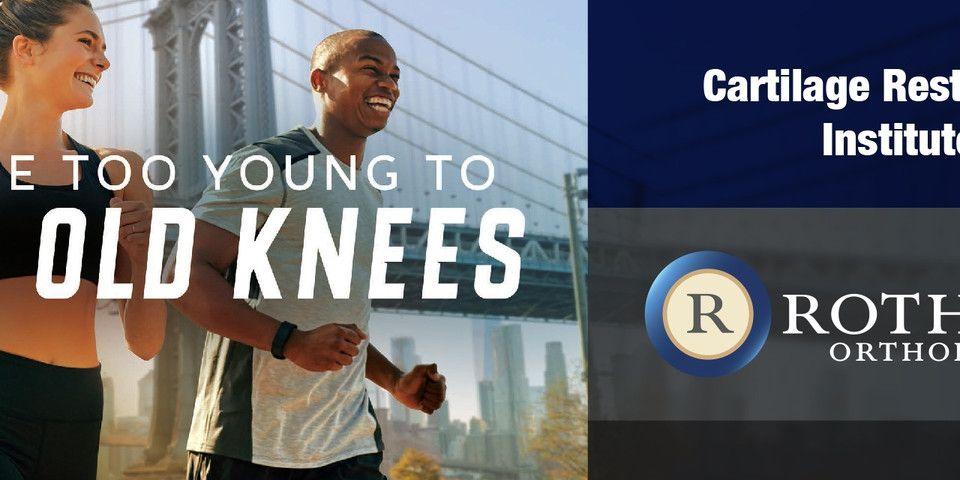Joint Pain Series: How Do I Know If I Have Arthritis?
We see countless patients, who come to us asking, “How do I know if I have arthritis?” We’ve written this article to help you try to answer that question!
If you’re dealing with joint pain and are wondering about the cause of your discomfort, this article is for you! While there are other causes for joint pain outside of arthritis (we mentioned a couple others in our article on determining the cause of your joint pain), there are three common forms of arthritis that are very often the culprits. We’ll review them below.
Arthritis: a Common Culprit
One in every five American adults (that’s over 50 million people) have doctor-diagnosed arthritis. And in more than 30% of those diagnosed cases, the patient reported having pain significant enough to limit their lifestyle, daily activities, and even their work.
If you’re experiencing joint pain and are wondering if you may be among these statistics, you’re probably beginning to wonder: how do I know if I have arthritis?
Arthritis is characterized by inflammation within a joint, but the reason for the inflammation can vary. Below we’ve provided a breakdown of how the major forms of arthritis occur in the body and how they present themselves with specific symptoms.
Here’s your guide to answering the question...
How Do I Know If I Have Arthritis?
Osteoarthritis: This form of arthritis is also called degenerative joint disease or is commonly referred to as “wear and tear” arthritis.
-
How does it occur? Over time, the breakdown of protective cartilage within a joint leaves the bones to rub against one another, producing pain. This can happen due to injury, overuse or even because of genetics.
-
What symptoms does it cause? This condition often affects the hips, knees, or lower back. In addition to general joint pain, it causes stiffness, especially first thing in the morning and swelling in the joints after activity.
Rheumatoid Arthritis: This form of arthritis is a systemic, autoimmune disorder that specifically impacts the joints.
-
How does it occur? When the immune system attacks healthy joint tissue, the synovium (protective lining of the joints) is compromised, resulting in inflammation.
-
What symptoms does it cause? It most commonly impacts the hands, feet, wrists, elbows, knees and ankles and occurs within those joints symmetrically. In addition to causing general joint pain, those suffering from Rheumatoid arthritis often also complain of fatigue, fever and various other problems throughout the body.
Psoriatic Arthritis: This form of arthritis is also an autoimmune disease, which affects both the joints and the skin.
-
How does it occur? The root cause of this condition is still unknown, but it occurs when the body’s own defense system mistakenly attacks healthy tissue. It is found in 30% of the individuals with the skin disease Psoriasis.
-
What symptoms does it cause? It often impacts the ankle, knees, fingers, toes and lower back. This condition can be distinguished by its tendency to produce swelling in the fingers and toes, as well as tenderness in the ligaments and tendons of the joints.
Ready to make an appointment with a doctor to discuss your joint pain? For more information, please visit us here or contact us at 1-800-321-9999.
If you’re still wondering, “How do I know if I have arthritis?” or if you have additional questions about the information you read here, check out the rest of the articles in our helpful series on joint pain:
Joint Series - Blog 1: Why do I Have Joint Pain?
How do I Know if I Have Arthritis
Do I Need to See a Doctor About Arthritis
Joint Series - Blog 2: What are my Treatment Options for Arthritis?
Related Specialties
Related Conditions
Related Treatments
Related Programs
-

Cartilage Restoration Institute
This is a center where patients can go to have their disabled joint biological resurfaced, realigned, and stabilized without having the joint replaced by artificial materials such as metal and plastic. It is well known that the outcomes of patients under the age of 50 undergoing artificial joint replacement are not as good as we would like. Therefore we feel the future of Orthopaedics is to try to restore a joint back to its original anatomy by realignment, ligament reconstruction, and cartilage restoration.Read More




